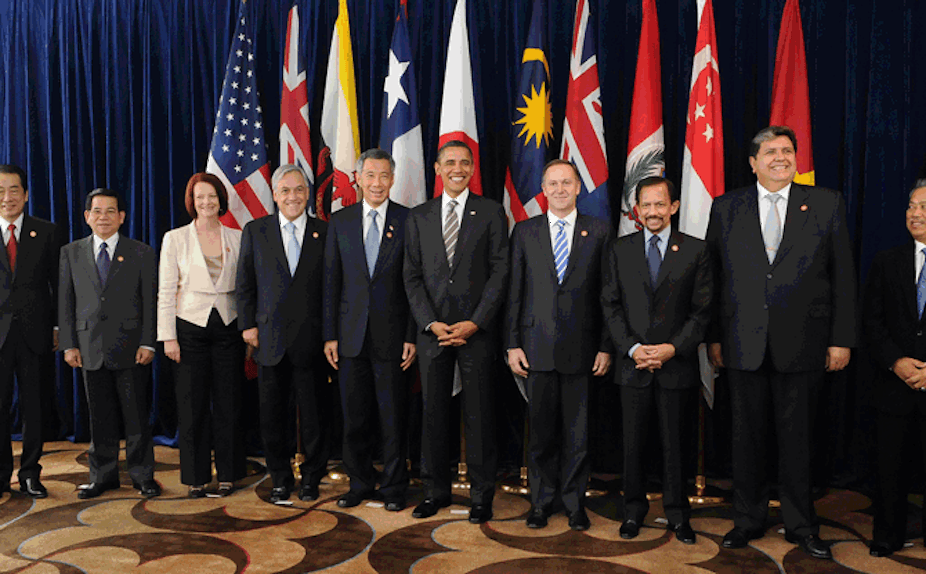Trade negotiations currently being conducted behind closed doors could see a major setback to providing access to essential medicines for the world’s poorest people.
The Trans Pacific Partnership Agreement is a proposed regional trade agreement involving Australia, Brunei, Chile, Malaysia, Peru, New Zealand, Singapore, the United States and Vietnam. The eighth round of negotiations concludes this week in Chicago.
On Monday, the United States Trade Representative released the white paper Trans Pacific Partnership Trade Goals to Enhance Access to Medicines. The paper claims that U.S. proposals for the Trans Pacific Partnership Agreement will promote access to medicines.
But on the same day, the United States reportedly tabled some of the most restrictive intellectual property provisions yet included in a trade agreement of this size.
These provisions would raise the cost of medicines and delay the availability of cheaper generic versions in countries where they are most needed.
Bitter pill
The public white paper is a clever piece of spin that obscures the real problem of access to medicines and the solutions.
It describes the challenge of providing access to essential medicines as largely being due to poor distribution, taxes and tariffs on medicines and counterfeit medicines.
These are challenges that trade agreements can fix, the paper claims. And to do this, it proposes removing the tariffs, reducing import and distribution barriers and curbing the trade in counterfeit drugs.
The white paper also proposes a “TPP access window”, which would obligate drug companies to make life-saving medicines available in participating countries within a certain period of time.
Unfortunately, this access comes in exchange for intellectual property protections.
Making medicines available doesn’t necessarily mean they will be accessible to the poor. And preserving patents for longer can mean that newer, more effective drugs such as HIV/AIDS and cancer medicines are inaccessible to people in developing countries.
There’s not much point in speeding up the availability of patented medicines when their prices put them out of reach for millions of people.
What this access window will actually do is to ensure market access for pharmaceutical companies.
The paper ignores the impact excessive intellectual property protections, which the United States is seeking in the Trans Pacific Partnership Agreement, will have on delaying access to affordable medicines.
According to the white paper, intellectual property protections for pharmaceutical companies can promote access to medicines because they provide incentives for the development of new medicines.
But this is clearly not the whole story.
Behind the scenes
Trade negotiations are conducted in secret and the intellectual property chapter the U.S. reportedly tabled this week is not publicly available. But a draft chapter leaked in February 2011 indicates what the U.S. negotiators are asking for.
It’s seeking a range of provisions in this agreement that would extend the rights of drug companies to charge high prices for medicines for longer periods.
The cost of medicines under patent can be many times higher than generic versions of the same drugs. According to Medicins sans Frontieres, for instance, a combination of HIV/AIDS medicines that cost $US10,400 per patient per year under patent in 2000, dropped to as low as $295 per patient per year when generic versions were introduced in 2001.
The U.S. proposals would enable drug companies to obtain patents for minor variations to existing medicines, even when they don’t provide any additional benefits.
This would require participating countries to make changes to patent laws that allow patenting of new forms of existing drugs.
Known as “ever-greening”, this is a well-known tactic pharmaceutical companies use to charge high prices for longer periods.
Other safeguards designed to prevent unwarranted patents would also become illegal under the U.S. proposals – many countries in the partnership agreement would have to change their laws to remove public rights to object to new patents before they’re granted.
The U.S. is also likely to ask for a longer period before generic manufacturers can use clinical trial data to register generic versions of drugs.
The World Trade Organization’s (WTO) Agreement on Trade Related Aspects of Intellectual Property Rights (TRIPS) provides for some flexibility in patent laws so developing countries can provide cheaper medicines to those who cannot afford brand name drugs.
But the U.S. proposals attempt to limit low-income countries’ use of these legal flexibilities.
None of these extensions to the intellectual property rights of pharmaceutical companies are discussed in the public white paper released by the United States.
The need for public discussion
The outcome of the Trans Pacific Partnership Agreement negotiations will have far-reaching consequences for access to medicines in participating countries.
Intellectual property regimes that prevent access to medicines on a global scale should be a matter for public discussion and debate.
Instead they are negotiated behind closed doors by trade representatives. There’s no input permitted from public health experts or consumers.
So what are the views of Australia’s trade negotiators? What position is Australia taking on the U.S. white paper and intellectual property proposals? Sadly, we are unlikely to find out until the deal is done.

